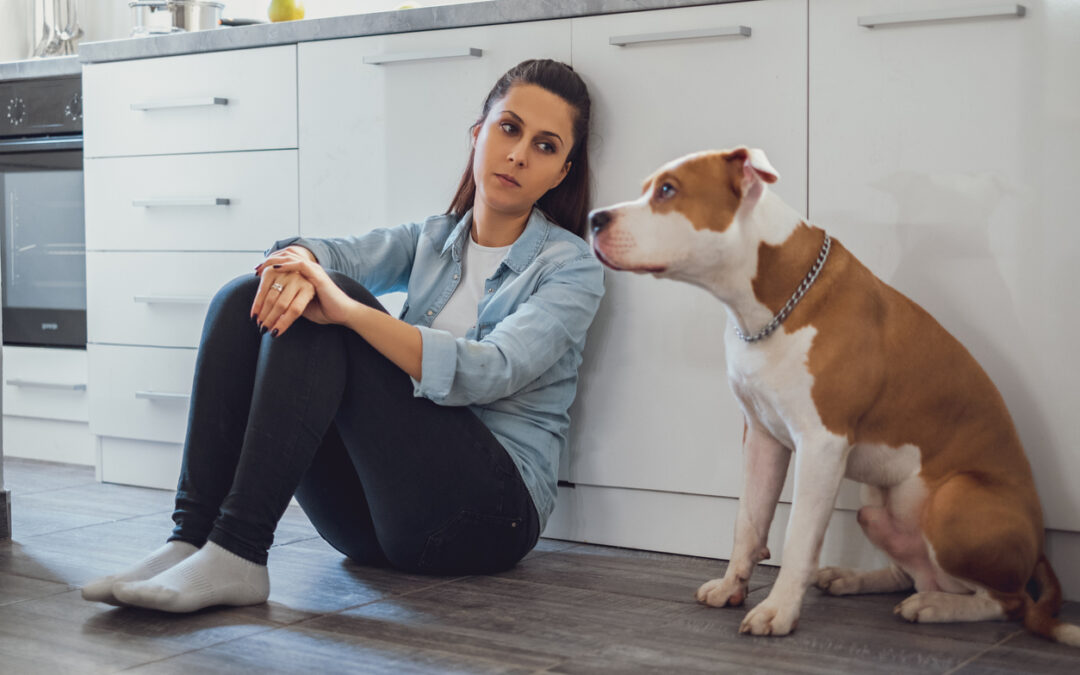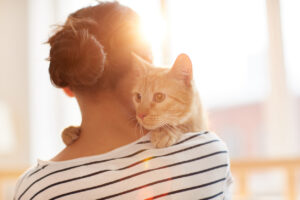COVID-19 has created a new normal. The possibility of being quarantined means planning to be prepared to stay home for two weeks or longer. Many of us have purchased food supplies and related items we need in case the possibility of a quarantine becomes a reality. Beyond purchasing food and household supplies, think about the supplies your pet will need should you be quarantined and unable to leave your home for an extended period of time.
The Center for Disease Control and Prevention (C.D.C.), the World Health Organization (W.H.O.) and health experts agree there is no evidence to suggest COVID-19 can be given to or spread by pets. While that is a good thing, the virus is changing the lives of pets across the U.S.
If it becomes necessary to quarantine within your home for two weeks or longer, be sure you have enough pet food and cleaning supplies. Dogs who live in apartments would be especially impacted if a quarantine becomes necessary. Pet parents should also plan to have an extra monthly supply of preventive medication for flea, tick and heartworm. Additionally if your pet requires other prescription medication, be certain you have enough on hand. Consider scheduling a wellness examination with your veterinarian now. Make sure your pet is up to date on her vaccines. If you have a cat, be sure you have extra cat litter on hand.
For those pets who live in an apartment, a quarantine would impact a dog’s ability to go outside to potty and get exercise. Pets with a private yard won’t need to worry about this but for those who don’t, it will be necessary for pets to go potty inside the home. While this goes against everything we have taught our dogs, if quarantining becomes necessary due to COVID-19, a plan should be in place for this possibility.
According to Ettel Edshteyn, owner of Poodles to Pit Bulls Clicker Training, the best way to teach your dog to go potty indoors is to follow the same routine you follow when you take your dog outside. Offering the same clues to your dog will signal them to do their business. Grab your leash, keys, potty bags or other items you would usually take with you. This will prompt your dog to get ready.
Keeping the same schedule is also important. If your dog goes outside first thing in the morning, keep that routine in place. “Walk your dog to the area you want them to go during a time when you think they need to potty,” said Ms. Edshteyn. Keep trying if your dog doesn’t immediately catch on but don’t pressure them. Take a break, go to another area of your home while continuing to watch for a signal from your pup he is ready to try again.
If it is necessary to have your dog go potty inside, it is extremely important to practice good hygiene. Be careful when cleaning up afterwards. To protect your floors, use newspapers or potty pads.
Be creative in finding ways to give your pet an opportunity to exercise should you need to be quarantined. In addition to playing catch, consider making a game for your pet by hiding treats throughout the home for them to find. If your dog is used to a lot of physical activity, it can be more challenging to be in a quarantine situation. The isolation could result in feelings of increased stress or even depression. This could be true for dogs as well. Dogs who become depressed could experience difficulty sleeping, eating and playing. It is possible they could become destructive or anxious. This could result in unusual behavior such as increased reactivity, increased barking or difficulty settling.
According to Ms. Edshteyn, dogs can struggle when they have nothing to do. By increasing the opportunity for them to participate in an activity, you could decrease their boredom thereby decreasing negative behavior. When humans feels isolated or bored, it can lead to depression or negative behavior. The same is true for our pets. By finding positive ways to adapt to our new normal, we will help our family and pets feel safe and secure.



